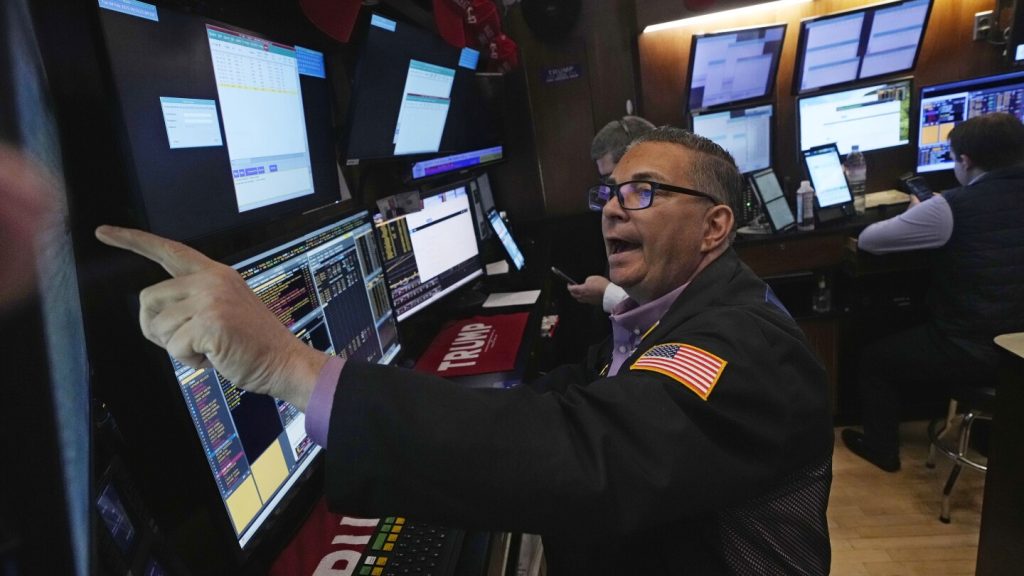A Mixed Day on Wall Street: Gains and Losses Across Sectors
Wall Street experienced a day of mixed trading on Thursday, as gains in fashion and cigarette stocks were offset by drops in shares of Ford Motor and Qualcomm. The S&P 500 rose 0.4%, driven by strong performances from Tapestry, the parent company of Coach and Kate Spade, and Philip Morris International. Tapestry jumped 12% after reporting better-than-expected profits and raising its forecasts for the fiscal year, attributed to its success in attracting younger customers. Similarly, Philip Morris surged 10.9% after exceeding profit expectations and impressing analysts with the strong performance of its Zyn nicotine pouches.
However, these gains were partially overshadowed by declines in other sectors. Ford Motor fell 7.5% despite delivering a stronger profit and revenue than anticipated. Investors were cautious about the company’s financial forecasts for 2025, which factored in potential challenges related to market factors. Qualcomm also dipped 3.7%, even after reporting solid quarterly profits, as high expectations and concerns about the broader wireless chip industry weighed on its shares.
Consumer Spending Boosts Retail and Apparel Stocks
The strength of consumer spending played a significant role in Thursday’s market movements. Companies that rely on discretionary spending saw notable gains, as consumers continued to show resilience despite economic uncertainties. Ralph Lauren, for instance, rallied 9.7% after reporting stronger-than-expected profits and revenue, driven by robust growth in China, where the company has recently expanded its presence with new stores in Hong Kong and Beijing.
Eli Lilly also saw a 3.3% increase after demonstrating strong demand for its diabetes and obesity treatments, which contributed to swelling profits. These gains underscore the importance of consumer confidence and spending in driving market performance, particularly in sectors that are sensitive to economic conditions. The solid results from these companies suggest that, for now, consumers are willing to spend on non-essential goods and services.
Economic Indicators and Trade Worries Influence Markets
The U.S. economy remains a focal point for investors, with key indicators and policy decisions shaping market sentiment. Thursday’s mixed trading was partially influenced by the latest unemployment data, which showed a higher-than-expected number of workers filing for benefits. While the overall number remains low, the report added to the uncertainty surrounding the health of the U.S. job market. Investors are eagerly awaiting Friday’s jobs report, which will provide further clarity on employment trends.
Trade concerns also lingered, as President Donald Trump’s tariff threats on Canadian and Mexican imports loomed over the market. Ford CEO Jim Farley emphasized the potential risks of prolonged tariffs, warning of higher prices, job losses, and reduced industry profits. While the tariffs have been delayed for 30 days, the long-term impact remains a concern for companies reliant on global supply chains.
Global Markets Show Mixed Momentum
Wall Street’s performance was mirrored by mixed results in global markets. In London, the FTSE 100 jumped 1.2% after the Bank of England cut its main interest rate and slashed its economic growth forecasts for the year. The British economy has struggled in recent months, with growth nearly stalled over the past six months. The central bank now expects growth of just 0.75% for 2023, down from its previous projection.
Elsewhere, Paris, Hong Kong, and Tokyo also saw gains, with their main indexes rising 1.5%, 1.4%, and 0.6%, respectively. However, in Japan, automotive stocks were mixed following reports that Honda and Nissan were abandoning discussions to form a joint holding company. While neither company confirmed the reports, the developments added to the uncertainty in the sector.
Honeywell’s Restructuring and Its Implications
Honeywell, one of the few remaining U.S. conglomerates, announced plans to split into three independent, publicly traded companies. The decision follows a broader trend in the corporate world, where large, diversified firms are breaking apart to unlock value and improve focus. Honeywell expects to complete the spin-off of its automation and aerospace technologies businesses by late 2026. While the move was met with optimism, it also weighed on the stock, which fell 5.6% and was one of the heaviest weights on the S&P 500.
The restructuring reflects the challenges faced by conglomerates in navigating diverse industries and meeting investor expectations. Companies like General Electric have pursued similar strategies in recent years, aiming to streamline operations and enhance profitability. Honeywell’s decision highlights the ongoing evolution of corporate structures in response to changing market conditions.
Closing Numbers and the Road Ahead
The S&P 500 ended Thursday up 22.09 points at 6,083.57, while the Dow Jones Industrial Average dropped 125.65 points to 44,747.63. The Nasdaq composite, fueled by gains in tech stocks, rose 99.66 points to 19,791.99. The 10-year Treasury yield held steady at 4.43%, reflecting the cautious mood among investors as they await further economic data and clarity on trade policies.
As markets look ahead, the focus will remain on key indicators, including Friday’s jobs report and the potential impact of trade tensions. The resilience of consumer spending and corporate earnings will also be critical in determining the direction of the markets in the coming weeks. For now, investors are navigating a complex landscape of economic growth, policy uncertainty, and geopolitical risks, all while searching for signs of stability and opportunity.








